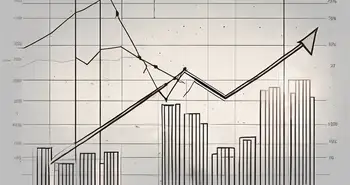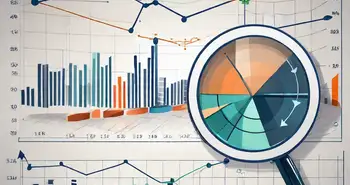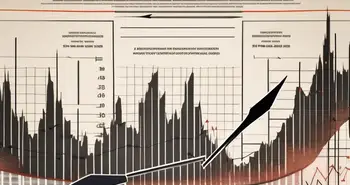How Do Fractional Shares Work

In the world of investing, fractional shares have emerged as an innovative way for individuals to participate in the stock market. If you're new to this concept or looking to deepen your understanding, you've come to the right place. In this comprehensive guide, I will take you through all the essential aspects of fractional shares, from their definition to the mechanics of buying them. So let's dive in and unravel the mysteries of fractional shares together!
Understanding the Concept of Fractional Shares
Before we delve into the finer details, let's begin by understanding what fractional shares actually are. In simple terms, fractional shares represent a fraction or portion of a single share of a company's stock. This means that instead of needing to purchase a whole share, you can invest in a fraction of it. For example, if a company's stock is valued at $100 per share and you only have $50 to invest, you can still own half a share.
Definition of Fractional Shares
To put it formally, fractional shares are units of stock that represent a fraction or decimal of ownership in a company. They allow investors to own less than one whole share, enabling them to invest smaller amounts of money while still gaining exposure to the stock market.
The Basics of Fractional Shares
Now that we have a clear definition, let's explore the basics of fractional shares. One of the key advantages of fractional shares is their affordability. With traditional shares, investors may be limited by the high price of certain stocks, making it difficult to build a diversified portfolio. Fractional shares eliminate this barrier by allowing investors to buy fractions of high-priced stocks, making them accessible to a wider range of investors.
Moreover, fractional shares provide an opportunity for portfolio diversification. By investing in fractions of multiple stocks across different sectors, investors can spread their risk and potentially increase their chances of generating returns. This flexibility and diversification are particularly valuable for smaller investors who may not have the capital to invest in whole shares.
The Evolution of Fractional Shares
Now that you have a solid grasp of the basics, let's take a journey through the evolution of fractional shares. While the concept of fractional ownership dates back to ancient times, the practice of buying and selling fractional shares has evolved over the years.
The History of Fractional Shares
Fractional shares gained prominence in the early 2000s with the rise of online brokers and the democratization of investing. Traditionally, trading in fractional shares was restricted to institutional investors. However, advancements in technology and the emergence of online brokerages opened the door for individual investors to participate in fractional trading.
In recent years, the popularity of fractional shares has skyrocketed, thanks to platforms like Robinhood, Charles Schwab, and Fidelity offering fractional trading options to their customers. These platforms have made it easier than ever for individuals to invest in stocks with small amounts of money.
Modern Developments in Fractional Shares
The world of fractional shares continues to evolve as new developments emerge. One notable development is the introduction of exchange-traded funds (ETFs) and mutual funds that offer fractional shares. These funds allow investors to gain exposure to a broad range of stocks while still owning fractional shares of each individual company within the fund.
Additionally, some platforms now offer the ability to automatically reinvest dividends from fractional shares, allowing investors to maximize their investment potential over time. This feature is particularly valuable for those looking to take advantage of compound interest and grow their wealth steadily.
The Mechanics of Buying Fractional Shares
Now that we have explored the history and benefits of fractional shares, let's dig into the mechanics of buying them. Understanding the process is crucial for anyone looking to start investing in fractional shares.
How to Buy Fractional Shares
The process of buying fractional shares is relatively straightforward. It typically involves selecting a platform that offers fractional trading, creating an account, and depositing funds. Once your account is funded, you can start searching for the stocks or ETFs you wish to invest in. Most platforms provide user-friendly interfaces that allow you to enter the desired dollar amount you want to invest, and they will automatically calculate the corresponding fractional shares.
Platforms for Buying Fractional Shares
There are several reputable platforms available for buying fractional shares, each with its unique features and advantages. Some well-known platforms include Robinhood, Charles Schwab, SoFi Invest, and Fidelity. It's essential to research and compare different platforms to find one that aligns with your investment goals and preferences.
Benefits of Investing in Fractional Shares
Now that you know how to buy fractional shares, let's explore the benefits of incorporating them into your investment strategy.
Affordability of Fractional Shares
One of the most significant benefits of fractional shares is their affordability. Investing in whole shares of high-priced stocks can be financially challenging for many individuals. Fractional shares eliminate this barrier, allowing investors to build a diversified portfolio with smaller amounts of money. This accessibility opens up a world of investment opportunities for people who may have previously felt excluded from the stock market.
Diversification Through Fractional Shares
Another key advantage of fractional shares is the ability to diversify your investment portfolio. By owning fractions of multiple stocks across different sectors, you spread your risk. This diversification can help mitigate the impact of any individual stock's performance on your overall portfolio. Fractional shares enable you to invest in a range of companies, providing exposure to different industries and potentially enhancing your chances of generating positive returns over time.
Potential Risks and Drawbacks of Fractional Shares
While fractional shares have their advantages, it's essential to consider the potential risks and drawbacks before diving in headfirst.
Understanding the Risks
Investing always involves risk, and fractional shares are no exception. Although fractional shares allow you to invest smaller amounts of money, the underlying stocks still carry the same risks as whole shares. Factors such as market volatility, economic downturns, and individual company performance can impact the value of your investment. It's crucial to conduct thorough research, diversify your portfolio, and consult with a financial advisor to navigate these risks effectively.
Mitigating the Drawbacks
While fractional shares may have their drawbacks, there are ways to mitigate these risks. One strategy is to invest in fractional shares as part of a well-diversified portfolio. By spreading your investments across different asset classes and sectors, you decrease the potential impact of any single investment on your overall wealth. Additionally, staying informed about market trends and regularly reviewing your investment strategy can help you make well-informed decisions and adapt to changing market conditions.
FAQ
1. What are fractional shares?
Fractional shares represent a fraction or portion of a single share of a company's stock. They allow investors to own less than one whole share, making investing in high-priced stocks more accessible.
2. How do I buy fractional shares?
To buy fractional shares, you need to choose a platform that offers fractional trading, create an account, and deposit funds. Then, you can search for the stocks or ETFs you wish to invest in and specify the dollar amount you want to invest. The platform will automatically calculate the corresponding fractional shares.
3. What are the benefits of investing in fractional shares?
The main benefits of investing in fractional shares are affordability and diversification. Fractional shares make it easier for individuals to invest in high-priced stocks with smaller amounts of money. They also allow for the creation of a diversified portfolio by investing in fractions of multiple stocks across different sectors.
4. What are the risks of investing in fractional shares?
Investing in fractional shares carries the same risks as investing in whole shares. Factors such as market volatility, economic downturns, and individual company performance can impact the value of your investment. It's essential to conduct thorough research and consult with a financial advisor to mitigate these risks effectively.
I hope this comprehensive guide has provided you with a clear understanding of how fractional shares work. By embracing the opportunities they offer, you can navigate the stock market with confidence and build a diversified investment portfolio that aligns with your financial goals.
As someone who has personally witnessed the benefits of fractional shares, I strongly believe in their potential to empower individuals to engage in the world of investing. I remember when I first started out, trying to save up enough money to buy a whole share seemed daunting. Fractional shares gave me the chance to invest in high-quality stocks, even with a modest budget. Over time, I have learned to use fractional shares as building blocks, gradually expanding my portfolio and reaping the rewards of diversification.
Remember, investing is a long-term journey. With fractional shares, you have a tool that can help you take those crucial first steps towards financial growth. Stay informed, stay diversified, and embrace the opportunities that fractional shares present!
Ready to take your investment journey to the next level with fractional shares? Discover the revolutionary world of Morpher, where you can start trading with as little as $1 and enjoy zero fees, infinite liquidity, and the safety of a non-custodial wallet. Whether you're interested in stocks, cryptocurrencies, or even niche markets like NFTs, Morpher's blockchain-based platform offers a unique trading experience with up to 10x leverage. Don't miss out on this innovative approach to investing. Sign Up and Get Your Free Sign Up Bonus today and join the future of trading with Morpher!

Disclaimer: All investments involve risk, and the past performance of a security, industry, sector, market, financial product, trading strategy, or individual’s trading does not guarantee future results or returns. Investors are fully responsible for any investment decisions they make. Such decisions should be based solely on an evaluation of their financial circumstances, investment objectives, risk tolerance, and liquidity needs. This post does not constitute investment advice.

Painless trading for everyone
Hundreds of markets all in one place - Apple, Bitcoin, Gold, Watches, NFTs, Sneakers and so much more.

Painless trading for everyone
Hundreds of markets all in one place - Apple, Bitcoin, Gold, Watches, NFTs, Sneakers and so much more.









